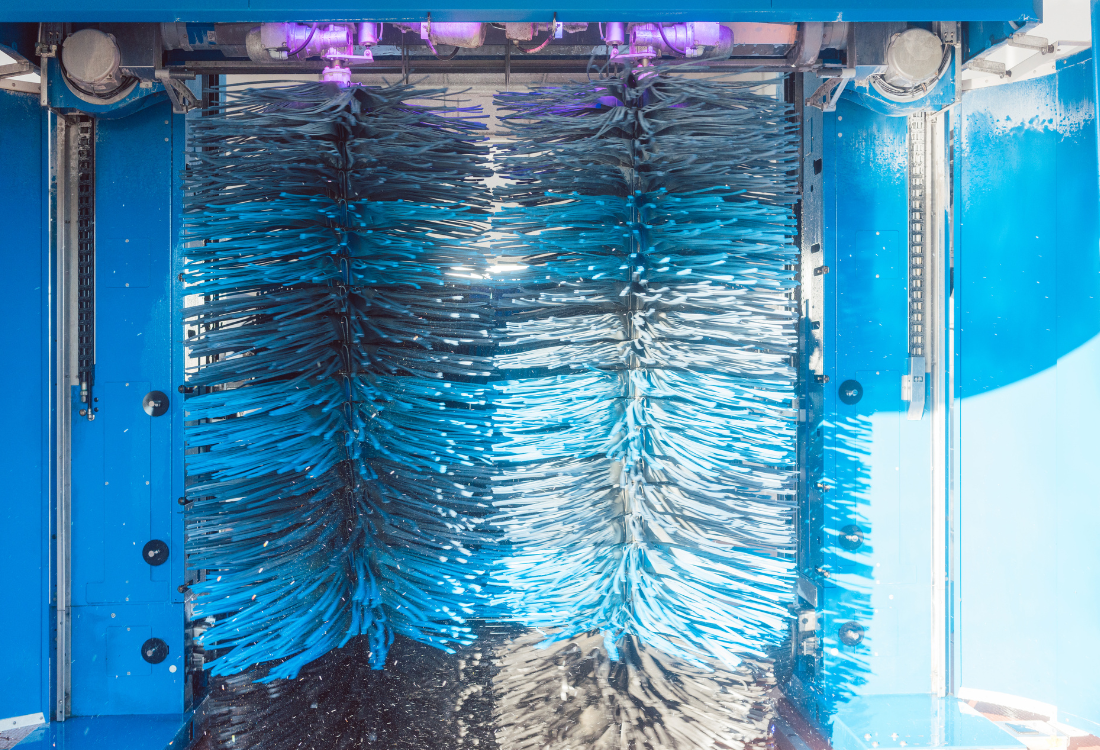
3 Ways That An Automated Vehicle Wash System Can Reduce Your Environmental Footprint
Automation is primarily a labour and capital-saving strategy, with the potential to reduce long-term costs for businesses while simultaneously improving output. However, there are also environmental and sustainability benefits to automation, especially when it comes to automated vehicle wash systems. By 2050, the Environment Agency estimates that the UK will need an additional 5 billion litres of water per day to support the everyday needs of its population, the economy, and the environment. This puts businesses under significant pressure to justify the water used by their processes and to reduce it wherever possible. In this article, we look at three ways that an automated vehicle wash system can reduce your business’s environmental footprint.
1. Water Conservation Through Advanced Recycling Technology
In 2023 to 2024, non-household water consumption in England was reported as 2,757 mega litres (that’s 2,757,000,000 litres) per day, reflecting the significant water quantities used by businesses and institutions. Water conservation is, therefore, one of the main environmental and operational benefits of an automated vehicle wash system. Conventional wash operations consume substantial fresh water from the mains through inefficient application methods and the absence of a structured recovery system. By structuring water utilisation and reuse into a closed-loop recycling system to maximise resource efficiency, an automated system will fundamentally change the way that your facility uses and processes water to wash vehicles.
How much water can you save? Water recycling efficiency varies according to the sophistication and operational parameters of your system, but an entry-level automated system can easily achieve water recycling rates of 70 to 80%, while a premium installation can achieve upwards of 95% reclamation. This capacity delivers a proportional reduction in the fresh water drawn from the mains, with immediate environmental and operational cost-saving benefits.
2. Reduced Chemical Use Through Precision Application Systems
The detergents, rinse aids, and other cleaning chemicals used by commercial fleet wash systems are not great for the environment. If they get into rivers, lakes, and other open water sources, they can cause significant damage to aquatic ecosystems, poisoning fish and water-dwelling plants, and often leaching into livestock and agricultural food chains. One of the primary goals of environmental sustainability is, therefore, to reduce chemical consumption. This can be achieved through automated dosing systems and optimised application protocols. Unfortunately, many traditional washing methods use more chemicals than are strictly needed due to manual application inconsistencies, inadequate mixing procedures, and the absence of effective feedback control processes. Equipped with programmable logic controllers and flow sensors, an automated chemical dosing system will deliver the exact chemical quantities you need based on the vehicle type, contamination level, and water conditions in your area. This takes human judgment and error completely out of the equation, maintaining a consistent approach to chemical mixing and concentrations across each wash cycle. Precise dosing also reduces chemical waste, reducing the amount of money you spend on detergents. PH monitoring and automatic adjustment also allow your system to maintain optimal chemical activity levels without overdosing, adjusting chemical addition rates as needed to maintain your target pH range.
3. Energy Efficiency Through Variable Frequency Drives (Vfds)
Another core component of environmental sustainability is energy use. While some older machine-washing strategies and wash bays wasted energy through inefficient equipment operation, extended processing times, and excessive heating, automated systems address these deficiencies through efficient design and intelligent control systems. This is achieved through variable frequency drive motor controllers, which reduce the energy used by your pumps and blowers by calibrating energy used to instantaneous system demands. These controllers adjust motor speeds to match your moment-to-moment flow and pressure requirements, rather than operating continuously at a standard or maximum capacity rate. A VFD system could reduce your energy consumption by 20 to 40% compared to a fixed speed motor installation, while also extending the operational life of your components by reducing mechanical stress.
What Next?
To find out about automated vehicle wash systems and how they can reduce your business’s carbon footprint and operational overheads, please get in touch with the team at Britannia today by clicking here or by calling 01789 339153.
Image source: Canva
.webp?width=249&height=77&name=Britannia-logo%20(1).webp)

